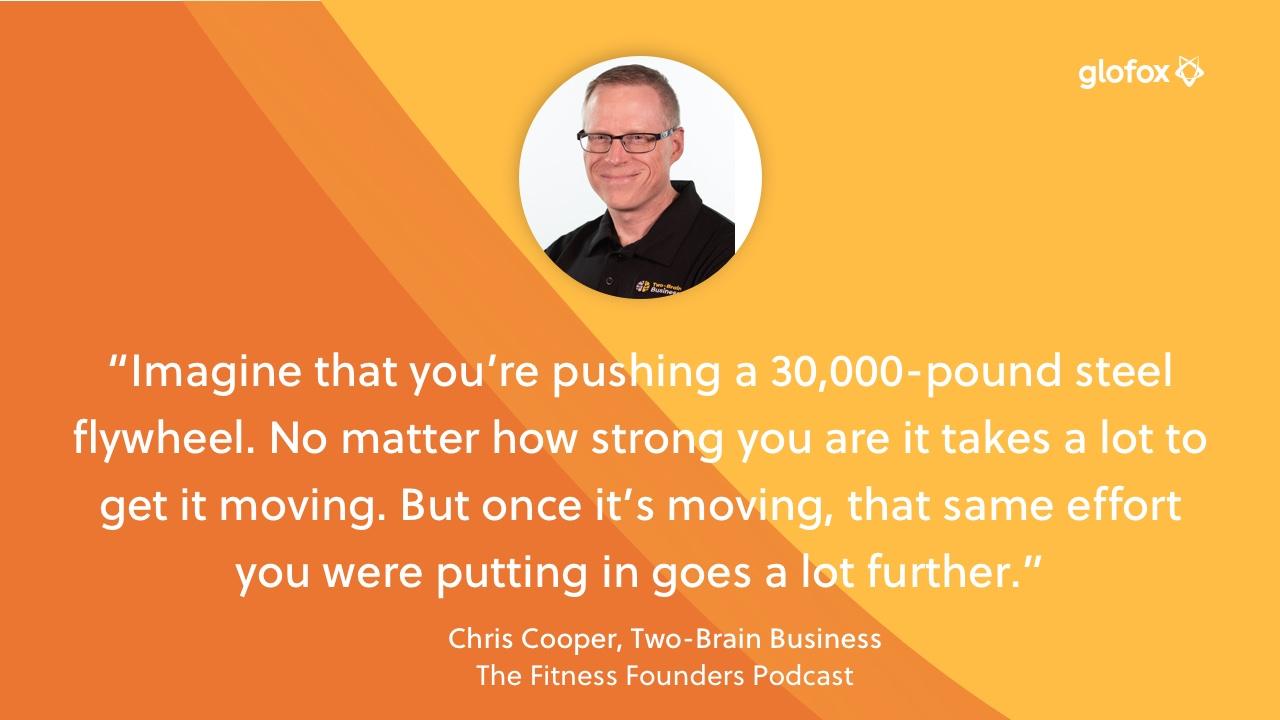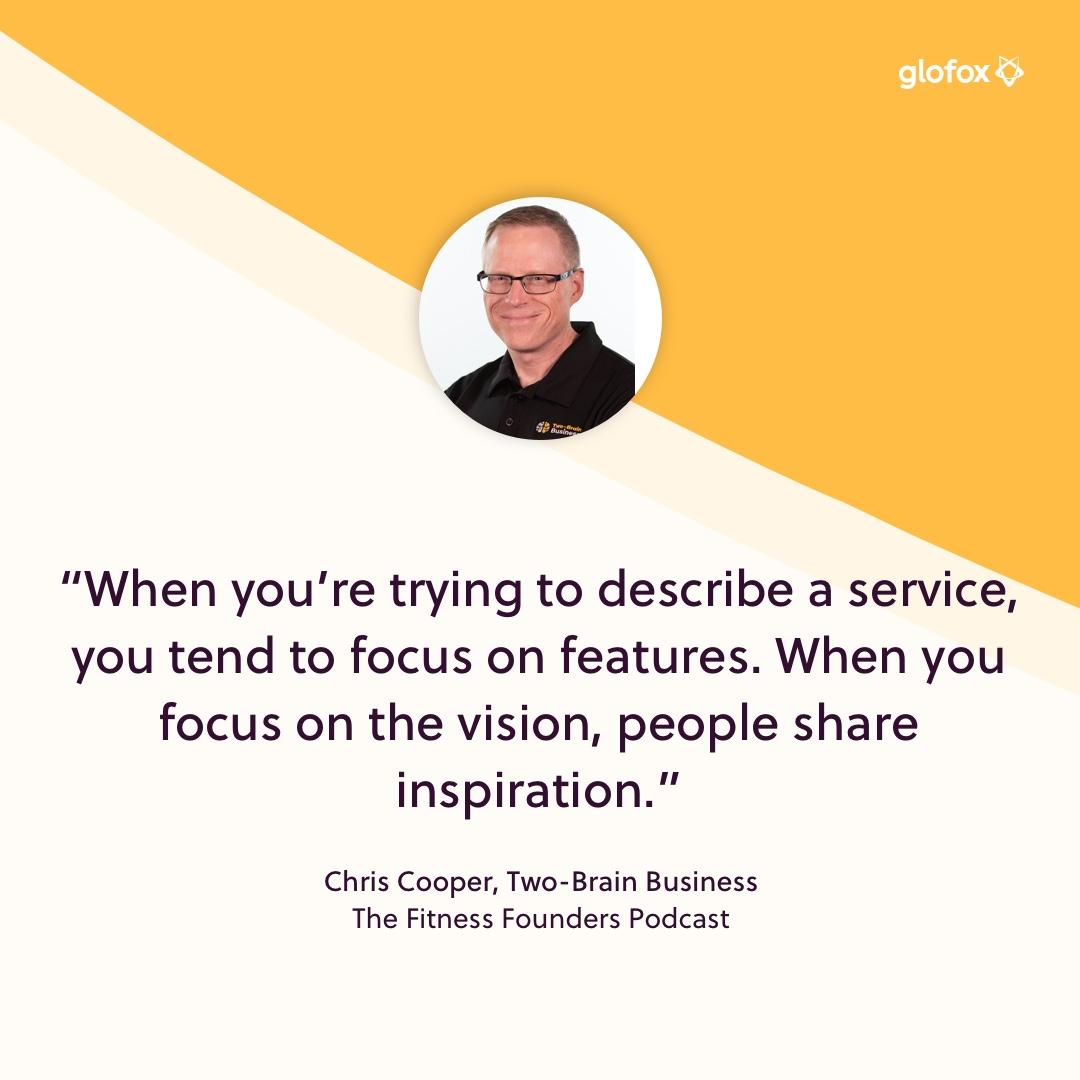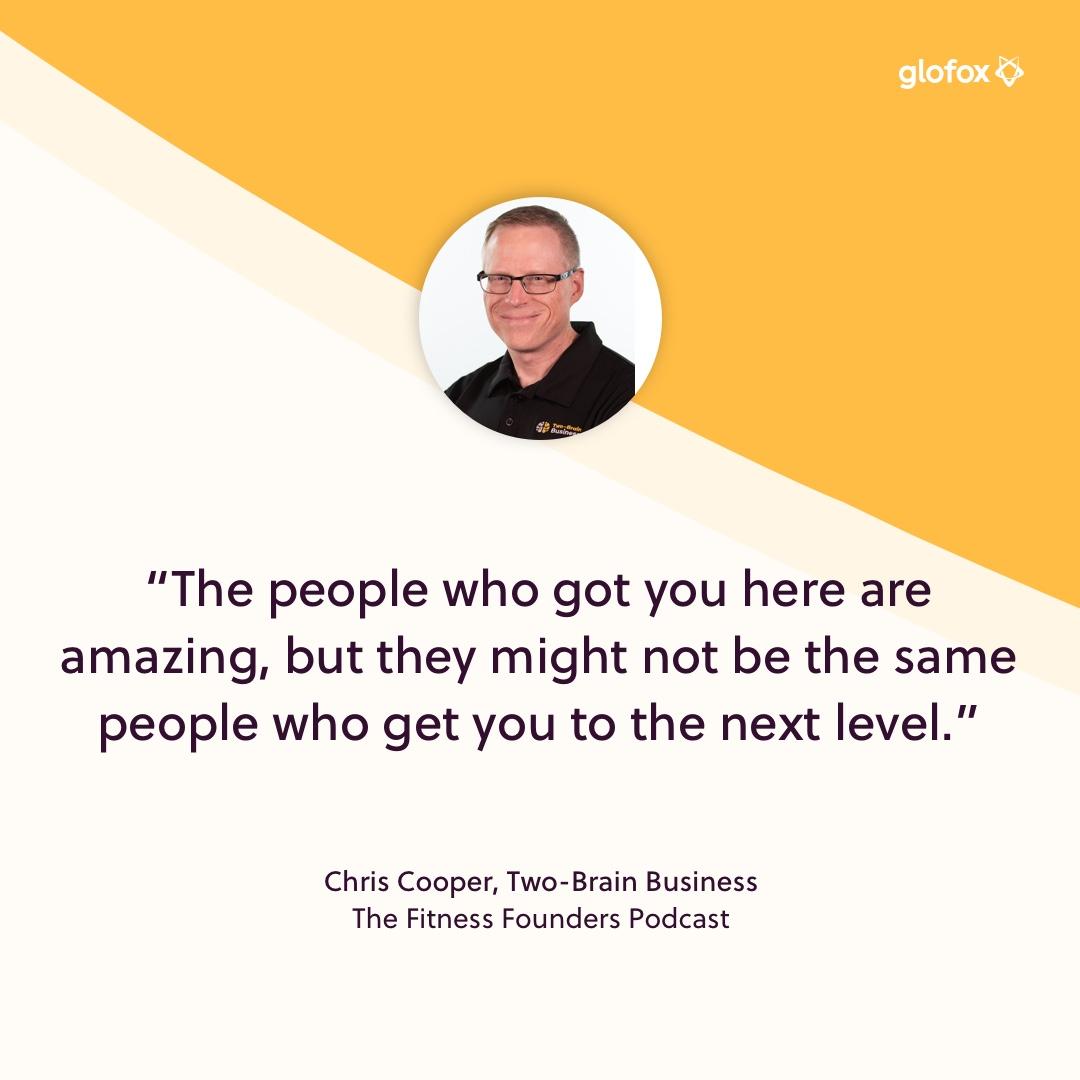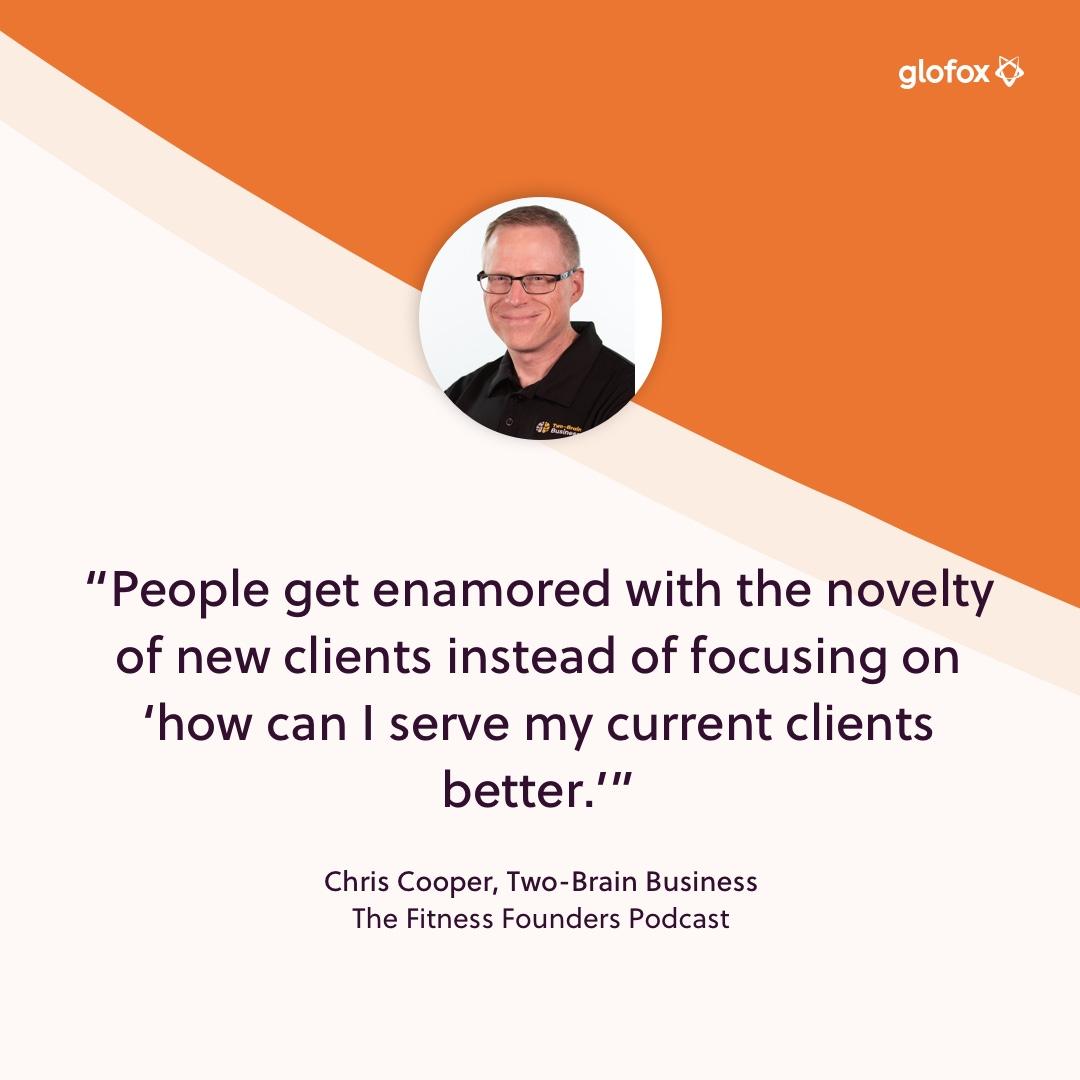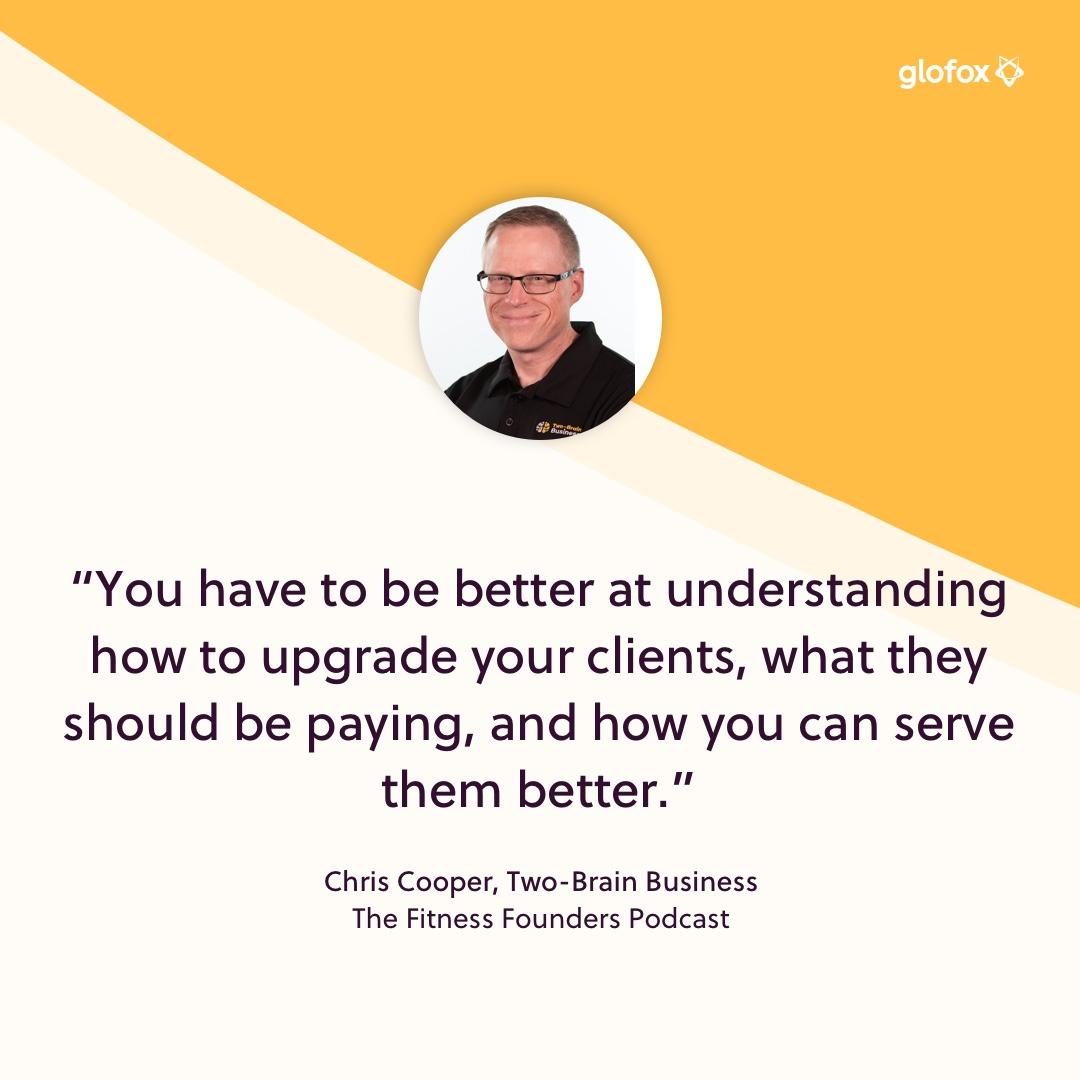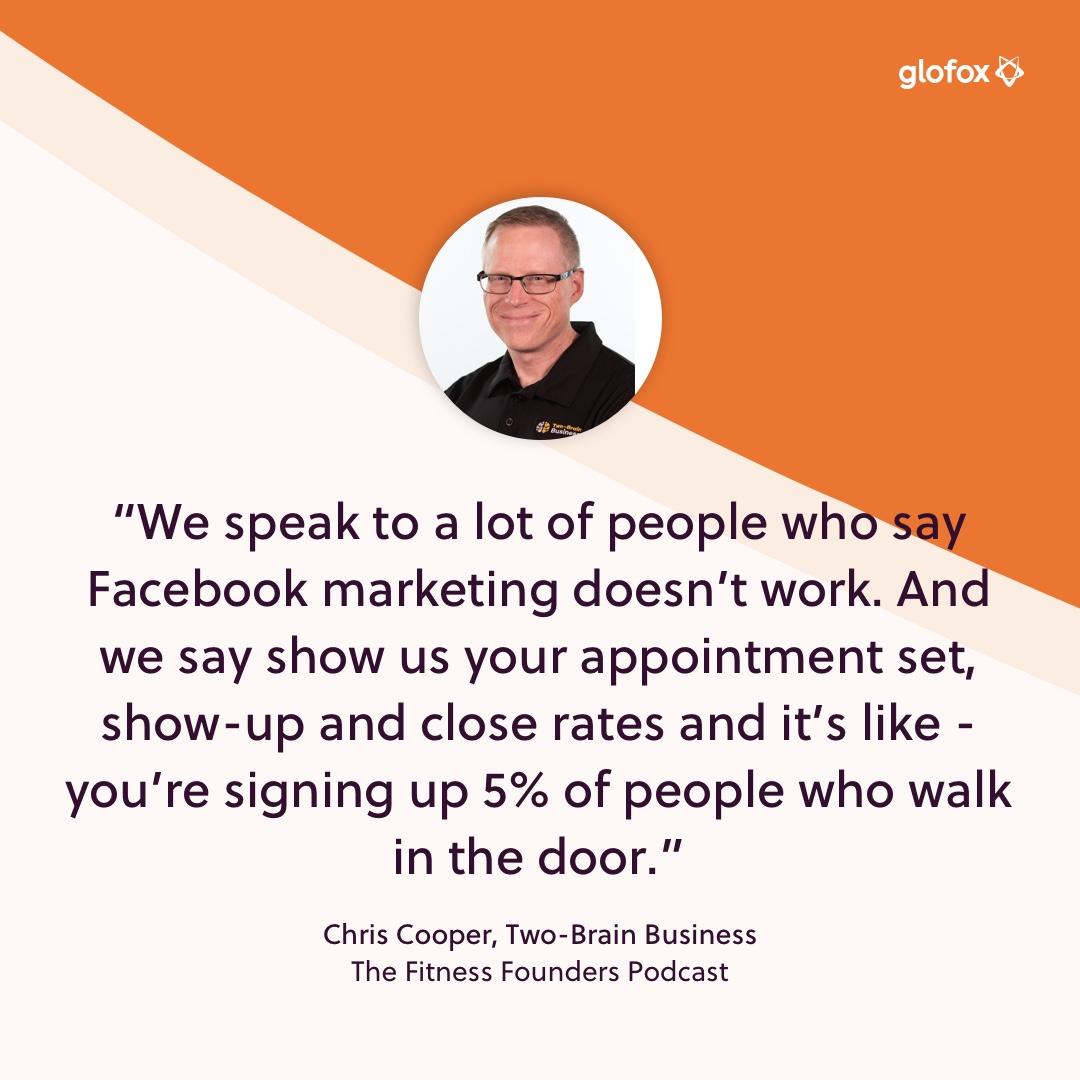Every business needs some form of advertising. But the thing is that while ads work, relying on a single method to grow your fitness business puts you at risk. To succeed, you need to diversify, and there are several critical areas of your business that require a strategy.
Put simply, if all your efforts focus on advertising – where do you find the time for working on the business itself? For improving your service, for seeing that leads aren’t converting and addressing the problem?
Chris Cooper is the author of two best-selling business books – Two Brain Business and Two Brain Business 2.0. He’s also the founder of a successful gym business mentorship program of the same name. From running his own fitness business and his experience coaching others to finding success, Chris has created a concept that, when used well, can help make any gym successful.
The Gym Flywheel
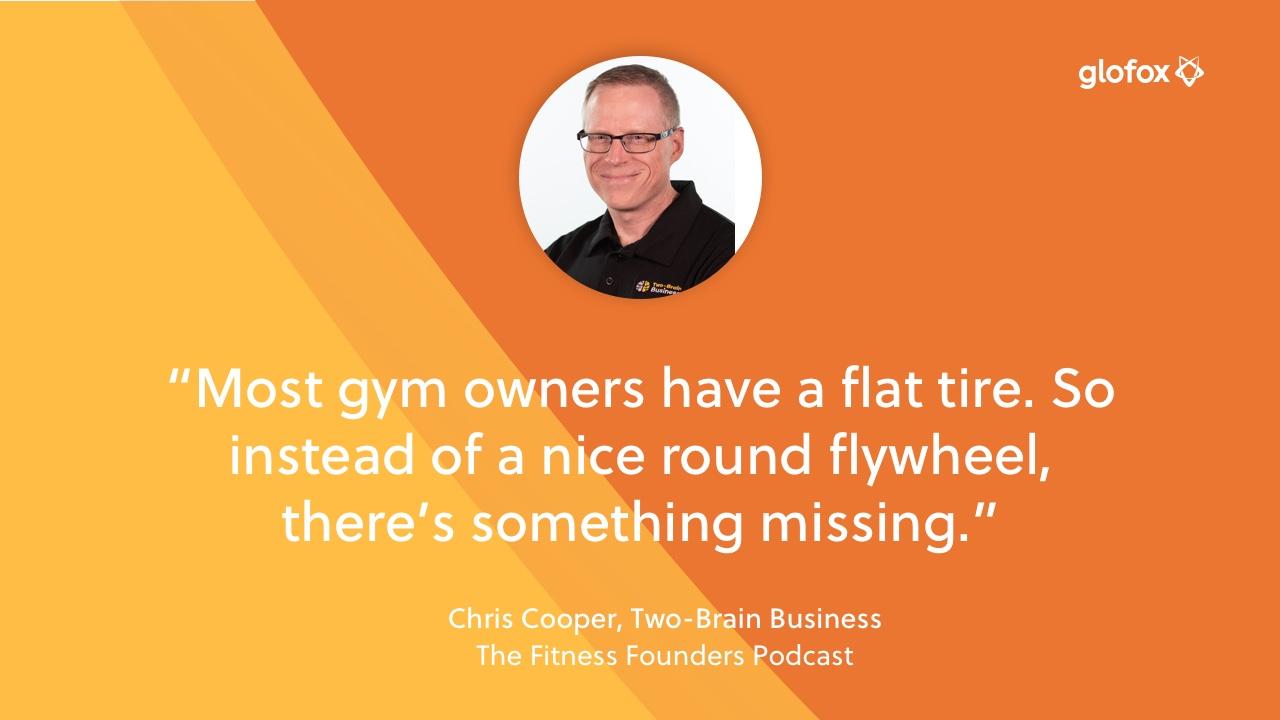
If you rely solely on one part of your gym for growth, your business has a flat tire.
Well, actually, it has a few.
Maybe you’ve got amazing staff – great!
Maybe you’re getting good referrals, great again!
But when it comes to getting leads in the door, maybe you’re stumped. The wheel is flat. And even though you’re working really hard, nothing seems to be changing.
You can listen to Chris talk about the gym flywheel here, or skip ahead to the individual parts of the process, but remember – you need all of them to succeed!
- Teaching the Vision
- Improve Operational Excellence
- Upgrading Your Team
- Keeping Clients Longer
- Sell More
- Get More Leads
1. Teaching the Vision
A mission fuels every business with purpose, and if it’s your business, it’s likely your vision. Having a clear idea of your vision and goals creates a focus, something that you’re driving your business towards.
But if you’re the only one who knows the vision, you’re the only one who’s striving to reach it.
If your staff aren’t aligned with your business vision, everything from their selling process to training clients is compromised. They’re the face of your business, and understanding your values is crucial in helping them provide an authentic service that’s representative of your brand. In terms of prospective and existing members: your vision is what will attract them to your studio and continue to motivate them.
So what’s your vision? Why does your studio exist, what’s its purpose? If you don’t have a clear answer in mind, it’s time you map out your vision so you can convey it to your team and members. Create a gym mission statement to underpin the “why” of your business strategy. Once this is nailed down, you need to convey it to everyone. “Part of leadership means telling people where you’re going.” Hold a team meeting to get everyone on the same page and encourage your staff to share their ideas on ways you can share the vision with members.
Skip ahead to 12.06 in the podcast to listen to Chris’s example of a good vision vs. a bad vision.
2. Improve Operational Excellence
On paper, you’re doing everything right. But sometimes, in practice, you’re falling short. This can happen across several areas of your business; think acquisition, retention, and marketing. When you can’t precisely pinpoint why your efforts aren’t bringing a return, it can be tempting to jump in with a strategy overhaul. But first, you need to assess if you’re delivering the strategy right.
Say, for example, you’ve recently launched an excellent referral program. It’s a great offer where new and existing members can really benefit, and it’s sure to get new clients through the door. But it’s been three months, and only two new members have joined through the program. As it’s a hypothetical scenario, I’ll tell you what’s gone wrong.
Your program is excellent. You emailed your existing members on the day of the launch to tell them. Three months later, and it’s barely been used. You think it’s because your members don’t want it, that it just won’t work for your studio.
But it’s actually a simple problem that’s so easily fixed – when you realize what’s missing, you’ll kick yourself. Aside from that launch email, no one has been promoting the offer. Your members don’t know the benefits, because they don’t know the program exists. So, this is where your operational excellence comes in: Your team needs to understand that any time they’re chatting to a member, they should be mentioning the referral program.
You’re the gym owner, so you understand that you have to bring your a-game and that you’re essentially on stage every time you see a client. So when you run into a member at your studio, it’s a big smile and a personalized greeting. It’s “You come in for so many classes, have you heard about our referral program?”
But what if your team isn’t delivering to that same level?
Chris puts this down to 4 key reasons:
- You haven’t told them exactly what to do.
- They don’t understand why they should do it.
- They don’t understand the consequences of not doing it and how it affects the member.
- They don’t understand what could eventually happen to them if they don’t up their game.
So, it’s up to you to lead. And the best way you can do this for your team is to systemize everything.
You might think it’s common knowledge that staff should greet members with enthusiasm and interest, to enhance their experience. You might think it’s common knowledge that they should be shouting about your referral program. But you shouldn’t assume that it is. Every action needs a documented process that everyone can follow – then everyone’s on the same page, and there are no excuses.
3. Upgrading Your Team
When you’re growing your business sometimes, ‘upgrading your team’ will mean replacing staff. But it can also mean empowering your existing team with further knowledge and tools to help them get better and grow with you.
The Customer
Engagement Playbook
for Your Fitness
Business
Discover more As your business becomes more profitable, you need to invest in your team so that they can get your clients better results. Because if your clients are getting better results, then the next steps in the flywheel process, keeping your clients longer and selling more, gets a lot easier. Upgrading your team means keeping them focused on what members need and getting them the education that will help them do that.
You’ll learn from experience that you can have exceptional trainers and bad ones. But what about the mediocre ones? The ones that are keeping everything ticking over, but there’s not necessarily anything extraordinary about their performance. For identifying a problem like this, Chris advises returning to the same steps as you would for operational excellence.
- Assume that they don’t know what to do – and tell them.
- Make sure they understand why it’s essential. This is crucial for motivating staff to want to deliver a high standard of service. It gives a purpose and a goal to work toward.
- Make sure they understand the consequences of not doing it in this way. If they can’t deliver to the standards that you expect, then they can’t coach for your studio.
It’s incredible to have smart, caring, knowledgeable people working for your business. But they need to be doing excellent work – and you have to teach them how to do that.
4. Keeping Clients Longer
From data collected by Two Brain Business in 2019, the average gym owner could make an extra $40,000 a year if they could just keep the average client for an additional three months. That’s incredible!
Sound familiar? It’s a common approach for many gym businesses, and it often means you undervalue your services to beat the competition. “What should I charge?” becomes “what does the guy down the street charge? I’ll charge $5 less.”
Using this strategy to bring in new members means the number of clients that you want is always ‘more clients.’ Then, it’s all too easy to become trapped in a downward spiral of “marketing, marketing, marketing” and ending up with a high churn rate.
Chris notes that part of the reason this happens is that gym owners don’t have a targeted number of clients when they set up their business. Instead of looking to offer the lowest price, the question you should be asking is, “what kind of living do I want to make? How can I do that with 150 clients?”
Rather than maximizing the number of customers in through the door, you need to focus on how you meet your living expectations with a minimum number of members – and let this determine your pricing model.
Chris uses an excellent example of this in the podcast at 20.31.
5. Sell more
When you’re running a fitness business, each prospect is coming in with a specific pain point and area that they want to address, so there isn’t a “one size fits all” quick sell option. Well, there probably is – but that’s not necessarily a good thing for your business in the long run.
If you aren’t selling based on a service that will help someone – they won’t stay. They might not even buy in the first place.
The sales tactic to go by is honesty, and to do this successfully, you need to throw your assumptions out of the window and listen. Present your client with a real solution to their problem. Until you listen, you don’t know what they need, and you’ll naturally be projecting your own bias on to them.
Say you spend 20 minutes getting to know a prospective member, and from experience, you know that the thing that will help them most is a personal training session 3-4 times a week. You’ve listened to what they want to achieve, and you know that pricing could be a contender for sealing the deal for this person.
You also offer group classes, and this would work out at half the price. But you know it won’t be as effective in helping them.
Do you dive in with the hard sell on group classes just to close a deal? Or do you tell them that honestly, from your experience, they need a trainer for best results? That this will cost them more, but get them where they want to be – and that’s what you want to help your members achieve?
Option one will get you a new client for a few weeks, maybe even months. But if they’re not seeing the results, they won’t stick around for long.
Option two will get your client results.
6. Get More Leads
According to Chris, getting more leads comes down to talking to people. In today’s digital-focused world, online ads will still only get you so far – there’s a difference between generating leads and converting them after all.
If someone sees your Facebook ad and it prompts them to walk through your door, only half of your job is done. If they’ve come in and had a conversation with someone from the team but still haven’t signed up, it’s not the Facebook marketing that’s the problem – it’s that you don’t understand how to be prescriptive when it comes to selling. Helping first is prescriptive, and this tactic is what will convert your leads into members.
In Summary
If you can actively implement each step of the gym flywheel, your fitness business will run like a well-oiled machine. But if you’re missing any of the components – you’ve got some work to do.
